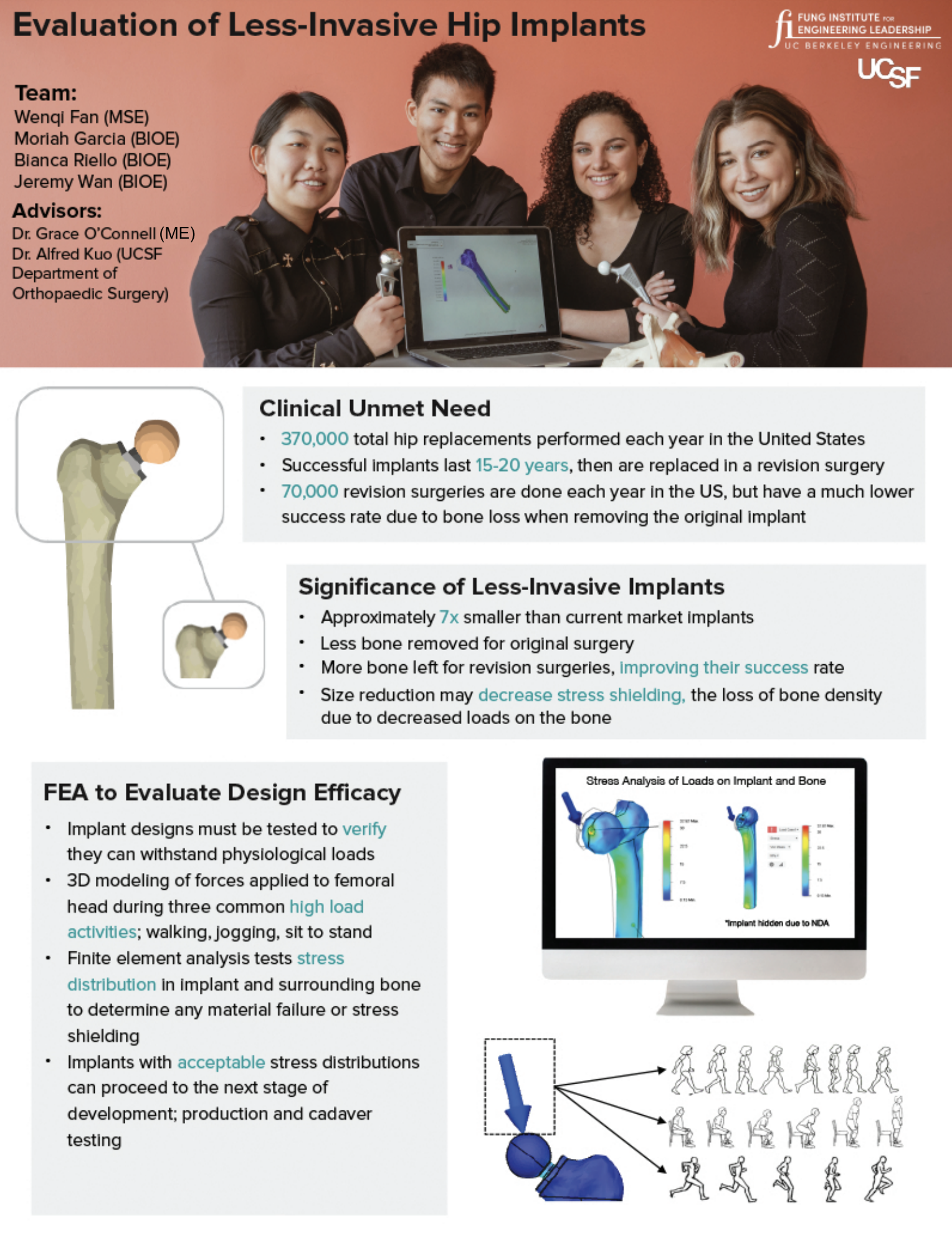Team: Wenqi Fan (MSE), Moriah Garcia (BIOE), Bianca Riello (BIOE), Jeremy Wan (BIOE)
Advisor: Grace O’Connell (ME)
Over 370,000 total hip arthroplasties are performed annually with 70,000 revision surgeries being performed each year. Surgeons at UCSF VA Medical Center Department of Orthopedic Surgery who perform these procedures daily believe that it is worth investigating the physiological response following the implantation of novel less-invasive hip replacement designs. Our team will be using Finite Element Analysis to determine if these implants will be not only feasible but superior in reducing stress shielding and preventing unnecessary bone loss while maintaining functionality.
Clinical Unmet Need:
- 370,000 total hip replacements performed each year in the United States
- Successful implants last 15-20 years, then are replaced in a revision surgery
- 70,000 revision surgeries are done each year in the US, but have a much lower success rate due to bone loss when removing the original implant
Significance of Less-Invasive Implants
- Approximately 7x smaller than current market implants
- Less bone removed for original surgery
- More bone left for revision surgeries, improving their success rate
- Size reduction may decrease stress shielding, the loss of bone density due to decreased loads on the bone
FEA to Evaluate Design Efficacy
- Implant designs must be tested to verify they can withstand physiological loads
- 3D modeling of forces applied to femoral head during three common high load activities; walking, jogging, sit to stand
- Finite element analysis tests stress distribution in implant and surrounding bone to determine any material failure or stress shielding
- Implants with acceptable stress distributions can proceed to the next stage of development; production and cadaver testing
Project Brief

← View all Capstone Projects


